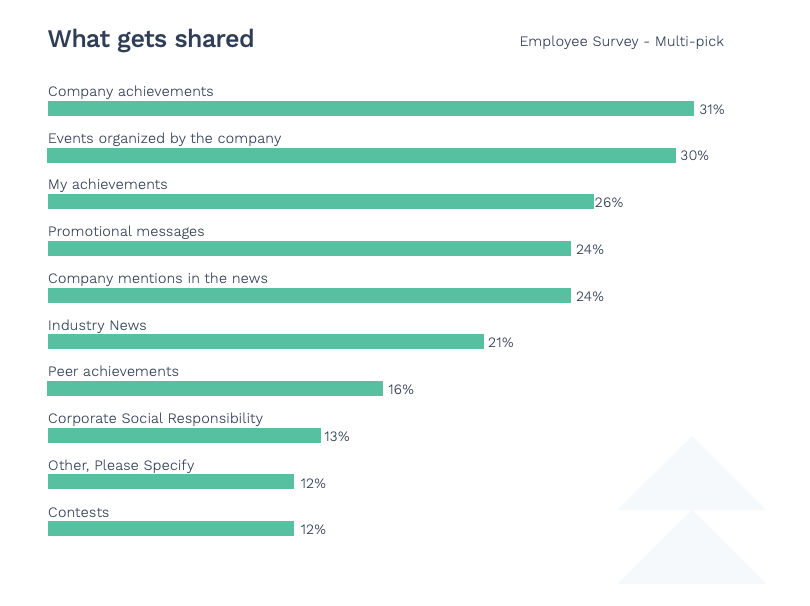Your online reputation management system is up and running. You’ve created and customized your alerts and you’re prepared for everything—including for any crisis your company may find itself in.
As your online reputation alerts, reports, and summaries roll in, how can you make the most out of them? If you’re looking for ways to turn these insights (including those you get from Scoop.it Alerting) into valuable outcomes for your company and take specific action to maximize results, you’re in the right place.
1. Build links to increase your organic search presence
As you start gathering your press mentions and appearances on third-party websites, you’ll probably come across some of them that mention your company or product name, but without a link attached to the name.
This is a huge opportunity to build relevant, quality backlinks towards your website, which will in turn send positive signals to search engines and help you improve your organic presence.
First, you’ll want to check that the website you were mentioned on is worth your time and has the potential to turn into a quality backlink. Here are a few things to check:
- The language matches your target audience language
- Domain rating is solid (30 and higher is ideal)
- It’s a relevant context to be mentioned in
If there are more mentions than you can analyze, start by looking for any positive news and announcement by using these words to filter your results:
- Released
- Industry
- Launched
- Contributed
- Results
- Customers
- Partnership
When you identify the best opportunities to start with, reach out to the publisher. Make sure to thank them for the mention, introduce yourself, and specify why linking to your company’s website fits the article and benefits their readers, too.
Keep an eye on pages that you reached out about so you can track any changes, even if the person you reached out to didn’t get back to you.
2. Identify patterns in your online reputation
Monitoring your online reputation is a great way to predict the ups and downs your business may go through on a regular basis. The longer you do it, the easier it will become to adjust to different seasons your business goes through.
For example, you may notice more alerts or press coverage during or around:
- Different days of the week
- Different parts of the month
- Various seasons
- Holiday seasons
- Industry events or big, worldwide launches
With insights like these, you can plan to increase your capacity as a communications team during certain times of the year to make the process of handling your online reputation feasible even when it gets really busy.
3. Turn user-generated content into a marketing vehicle
Featuring and celebrating content that your customers create to share your product is one of the best ways to grow a loyal customer base.
Here’s what nurturing customer loyalty can do for you:
- Loyal customers spend 67% more than new ones
- 88% of US consumers want to engage with brands that are setting new standards in meeting their expectations
- 79% of consumers said brands have to actually demonstrate they understand and care about them before they’re going to consider purchasing
When you consider these statistics, it becomes obvious that social media plays a huge role in genuine interactions with your customers. This is why your online reputation solution is a great tool to build and nurture these relationships. You’ll catch social media posts about your product right away, and you’ll be able to react instantly.
Check out how Whole Foods featured their customer’s image and message on their Instagram feed:
By featuring user-generated content in your marketing campaigns, here’s what you’ll achieve:
- Customers that already purchased your products will feel seen and heard
- Potential customers that have been actively considering buying from you will feel encouraged and validated by experiences of current customers
- People who weren’t considering buying from you, or that haven’t even heard of you, will become aware of you
A single piece of user-generated content can be used across a range of channels and campaigns. From organic to paid posts, from emails and landing pages to product pages and even real-life billboards, you can improve every marketing asset you have by featuring content about your product that your customers organically created.
4. Find customers for case studies and success stories
By monitoring positive mentions online, you’ll come across some of your best, most successful customers.
This is a great opportunity to create customer success stories that you can feature on your website, as well as turn into other marketing assets you can share publicly and in your sales conversations with prospects.
First, when you come across mentions that indicate this customer has seen success with your product, try to validate their experience in your customer database. You can look for answers to questions such as:
- How long have they been a customer?
- Have they purchased more than once from you?
- Do they spend more money on your offerings than the average customer?
- Do they refer others to you?
- What is their history with your customer support team?
Then, once you’ve confirmed they’re among your most successful customers, reach out and see if they’d be up for an interview with you so you can put together a written story about their experience with your products.
5. Drive employee advocacy
Your online reputation doesn’t just bring you benefits through external communication and marketing efforts. You can put it to great use internally, too, in the form of employee advocacy and loyalty.
One survey uncovered that employees are largely sharing company driven content, including company achievements, company events, and promotional messages:
This means there’s lots of room to stand out with exceptional content you’ve curated through your online reputation management and monitoring.
Instead of giving your employees dry press releases and content that looks the same as everyone else’s, you can give them third-party content that will help your efforts in lead generation, sales, talent recruitment, and content distribution.
With a system in place, you won’t have to do any of this manually. Instead, thanks to the filters in your online reputation solution and tagging the most relevant pieces, you’ll easily surface the best, most interesting content and fuel your employee advocacy program.
Don’t wait to make the most of your online reputation solution any longer
With the principles, tips, checklists, and next steps we’ve shared, you can now take your online reputation seriously and turn insights into action. You can do all of this with Scoop.it Alerting and its simple, but powerful monitoring and insights.




